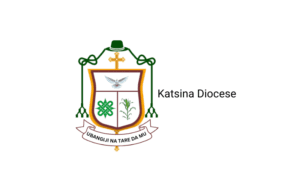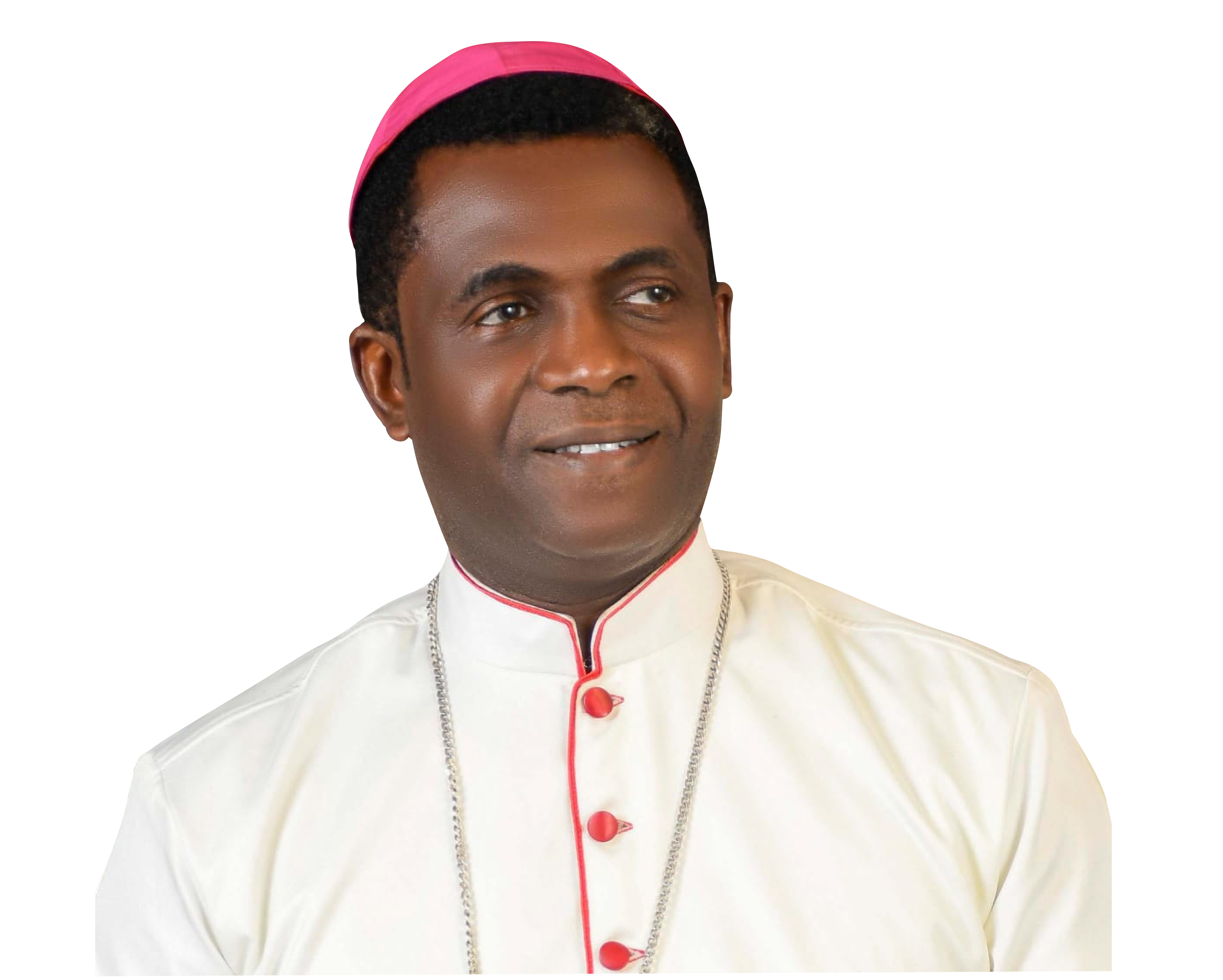About Us

A Brief History of KATSINA DIOCESE
The announcement of the creation of the new Ecclesiastical jurisdiction known as Catholic Diocese of Katsina was conveyed to the world on Monday, 16th October 2023 from the Vatican. In doing so, His Holiness Pope Benedict announced the appointment of Reverend Monsignor Gerald Mamman Musa as its first Bishop, hitherto, an Associate Professor of Communications at the Catholic Institute of West Africa, CIWA, Port Harcourt.
By this decision, the former Diocese of Sokoto which comprised Katsina, Kebbi, Sokoto and Zamfara has now been split. The new Diocese of Katsina now covers Katsina state and Kaura Namoda (a part of Zamfara State) which is about 25, 060 km2 (9,676 sa mi) – located in the North-West region of northern Nigeria.
The history of the new Diocese of Katsina is interwoven with that of the Catholic Diocese of Sokoto. It stretches back peripherally in 1870, when two Franciscan Priests from Agadez (Niger Republic) were said to have travelled down to the areas that now make up part of Katsina today. They really did not set out for active missionary work as such, and they left no significant trail before ill-health led to their death. A much more cohesive history goes back to the twentieth century with the arrival of Father Berengario Cermenatti, of the Society of African Missions, SMA, to Sokoto in November 1921, coming all the way from Zaria. This shifted the focus of Pastoral work to Sokoto, which was a more advanced city by then due to its historical roots with the eponymous Sokoto Caliphate. While Argungu and Sokoto became the focal points for the missionaries, Gusau and Funtua were on the route to these destinations.Missionary work continued around the Argungu area until it was closed in 1948. Luckily, Gusau had a resident priest named, Father Daniel Watson. With this new development, interactions regarding pastoral work between Zaria and Katsina improved. On 19th June 1953 the civil Provinces of Sokoto and Katsina were extracted from Kaduna Prefecture to Sokoto, which was to be administered by the Dominican Friars from Chicago, USA. This led to the establishment of six Catholic Missions in Sokoto and Katsina. Sokoto had Gusau, Sokoto and Yelwa, while Katsina had Funtua, Katsina, and Malumfashi. These six mission areas later became the first six parishes of Sokoto Diocese. Out of the six, three fell under what is now carved as Katsina Diocese.
Funtua was known for its traditional agrarian economy that attracted people from other parts of the country to participate in business activities. It is a city located on the route to the major commercial cities of Northwest Nigeria like, Kano, Sokoto and Katsina. It had the advantage of the railway services connecting it to Kaura Namoda and Zaria. Funtua was an outstation of Zaria. The community in Zaria started with four baptized persons and six catechumens. The first baptism took place on 25th July 1929 (name?). In 1960, a church building was erected, and Fr. Bell (first name?) became the first resident priest. He covered Funtua and some rural areas and from there began to reach out to the Hausa communities attracting the first Christian converts. This parish is a significant springboard of evangelization in what is now known as the Katsina Diocese. Malumfashi is also one of the three first parishes of Sokoto Diocese it became an outstation in 1958. The presence of Dominican priests and Religious Sisters made Malumfashi a unique mission area. A piece of land was obtained in 1961, and a mission was established in 1962. Fr. Richard Farmer OP was assigned to take care of the mission. Early evangelization around Malumfashi flourished with the adoption of Education and Health as key life enhancing strategies which have worked very well for the Catholic Church. Malumfashi would later become the parish with the highest number of outstations in Sokoto Diocese among the Hausa Christians. It became the center for rural evangelization and a supplier of health care assistance to rural communities due to the presence of the healthcare facility run by the Dominican sisters.
Katsina was an outstation of Kano that was frequented by the SMA priests from Kano. But from 1958, it served as an outstation of Gusau and later Funtua. In 1964, a priest residence was built but the civil war changed the nature of pastoral presence there.
Despite it all, pastoral work continued to flourish with Priests and Catechists working around Katsina to places like Dutsin-Ma, Daura, Kankia.
Batsari and Jibia. pastoral work moved far beyond the territories of urban areas to focus more on rural evangelization. The opening of the Catechetical Training School at Malumfashi, now known as St.Joseph Mukasa Catechetical Training Centre, to train Catechists for the whole of Northern Nigeria paved the way for rural mission in Hausa communities of Katsina. This feat aided the evangelization of the indigenous Hausa people and their participation as missionary assistants in virtually all parts of Sokoto Diocese. Mallam Mamman Musa, the father of the new Bishop was a pioneer Catechist who laid the foundation for rural pastoral work and the recruitment of other Catechists. He can be referred to as the father and grandfather of the Catechists of the Diocese of Sokoto)
The said old Malumfashi Parish constitutes major parts of the current Katsina Diocese. The wake of the second millennium availed the creation of new Parishes, Mass centers and Pastoral areas in the rural Hausa communities by Late Bishops Kelvin J. Aje
The new Diocese of Katsina is currently made up of sixteen parishes and two chaplaincies at creation.
They include the following: St. Martin De Porres Cathedral, Katsina, St. Joseph’s, Shagari Low Cost, Katsina, St. Gabriel’s, Daura, St. Mary’s, Dutsinma, St. Joseph’s, Jibia, St. Theresa’s, Funtua, St. Vincent Ferrer’s, Malumfashi, St. John Bosco, Malamawa, St. Patrick’s, Gidan Maikambu, St. Jerome’s, Gidan Yawa, St. Joseph’s, Layin Minista, St.John’s, Gidan Kurma, St. Mary’s, Korau, St. Paul’s, Tafoki, St. Joseph’s, Maichibi, St. Peter’s Kaura Namoda, Federal Polytechnic Chaplaincy Kaura Namoda and Army Chaplaincy, Katsina.
The Diocese has twenty-eight priests, one higher institution, three secondary schools, eleven nursery and primary schools and one health institution (serviced by the Dominican Sisters and Fidei Donum Priests from the Archdiocese of Kaduna, Kafanchan and Zaria Dioceses. We congratulate His Lordship, Bishop MHK under whose leadership this new baby has been born. We pray that this Diocese will serve as a rallying point and become the epicentre for the evangelization of Hausaland. On this special day that we celebrate the feast of Our Lady of Guadalupe, we entrust the new Diocese into her maternal care.
Mission
Our mission is to proclaim the Gospel of Christ, nurture spiritual growth through worship, teaching, and fellowship, and serve as a compassionate presence in our community, fostering hope and transformation through God’s grace.
Vision
To be a beacon of faith and love, guiding individuals and communities toward spiritual growth, unity, and the fulfillment of God’s purpose in their lives.
CLERGIES
Most Reverend Gerald Mamman Musa was until now, a priest of the Catholic Diocese of Sokoto.The ecclesiastical territory of the Diocese covered Sokoto, Kebbi, Zamfara and Katsina states.
A native of Argungu, Kebbi State, Gerald Mamman Musa was born on 16* January 1971 in Gusau, the present Zamfara State where his father and mother, Emmanuel and Christiana Musa, lived and worked.When he attained school age, he attended the Army Children School, Gusau, Zamfara State and later Tunau Primary School, Malumfashi, Katsina State in 1982.His journey to priesthood began at St. Joseph Minor Seminary Zaria for his secondary school education where he graduated in 1987. In that same year, he was admitted into St. Thomas Aquinas Major Seminary, Makurdi and thereafter, St. Augustine’s Major Seminary Jos, where he obtained a Diploma in Religious Studies in 1992 (affiliated with the University of Ibadan) and a Bachelor of Arts in Theology in 1995 (affiliated with the Pontifical Urban University, Rome). Most Reverend Gerald Musa studied Dogmatic Theology and graduated with a Master of Arts from the Pontifical University of St. Thomas Aquinas (Angelicum), Rome, Italy in 2005.
His love for letters guided him to study and obtain a bachelor’s degree and Licentiate in Social Sciences with a specialization in Communication at the Pontifical Gregorian University, Rome, Italy in 2006. By 2013, Most Reverend Gerald Mamman concluded and graduated with a PhD in Communication Studies at the School of Journalism and Communication, University of Queensland, St. Lucia, Brisbane, Australia.
He has wide pastoral experience within and outside Sokoto Diocese. He was Parish Priest from 2001-2003, at St. Patrick’s Church, Illela, Sokoto State and at St.Vincent Ferrer Church, Malumfashi, Katsina State 2007-2008. While serving in Illela as Parish Priest, he was Patron, of the Christian Association of Nigeria for Illela Local Government from 2002-2003. He gained some administrative experience between 1995-2000 when he worked as Diocesan Secretary and head of the Sokoto Diocesan Chancery and as Associate Cathedral Administrator, at Holy Family Cathedral, Sokoto. He was the Administrator, Upper Mount Gravatt-Wishart Parish in the Archdiocese of Brisbane, Australia 2012-2013; Assistant Chaplain, Mater Misericordiae Hospital, Brisbane, Australia 2011-2012; Priest in Residence, Jubilee Catholic Parish, Brisbane, Australia 2008-2011 and Priest in Residence, St. Bernard’s Church, Upper Mount Gravatt, Brisbane, Australia.
He was the Secretary, of the Christian Association of Nigeria (Sokoto State Chapter) from 1998-2000 and Exco member, Nigeria Inter-religious Council, Sokoto State Chapter from 2001-2003. In 2005, he had an internship at Catholic Television (Prayer Channel), Brooklyn Diocese, New York. Until he was appointed Bishop of the newly erected Catholic Diocese of Katsina, Most Reverend Gerald Mamman Musa was Senior Lecturer and Director of the Centre for the Study of African Culture and.Communication, Catholic Institute of West Africa, Port Harcourt.
His teaching experience at the top level spanned 9 years. He started as Assistant Lecturer in Communication for Social Change at the University of Queensland, Australia in 2012 and later joined the Catholic Institute of West Africa until he rose to the post of Head of Department of Communication. He successfully supervised 28 Postgraduate theses within the period. He was also Director of Examinations and Records from 2013 until 2022.
The new Bishop has three books published to his credit: Linking Belief and Life, Colorado, USA: Lifevest Publishers, 2008.
Dialogue of Action: Christian-Muslim Relationship was published in 2020 by Beau Bassin, Mauritius, LAP Lambert Academic Press. The 2d (Revised) Edition was published by the Ahmadu Bello University Press, Zaria Nigeria. He was co-editor of the book titled Our Stories: 25 Years After was published in 2021 (Musa, G.M., Sanjumi, Z.N., Adeiza, D.O).
